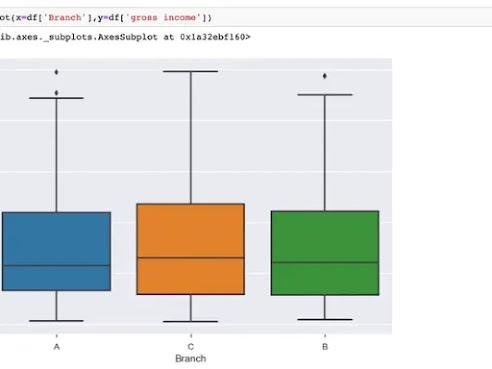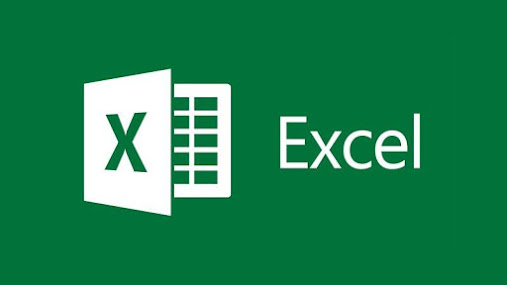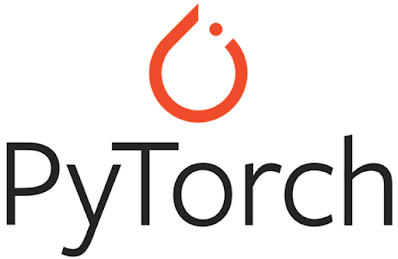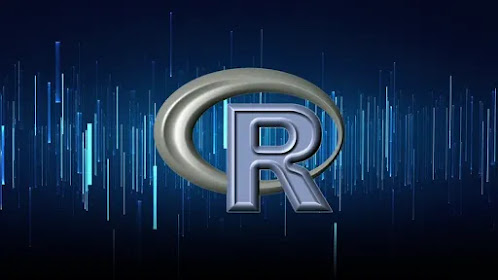Hello guys, if you are learning Data Science and Machine Learning in 2025 and looking for essential tools and libraries then you have come to the right place. Tools are very important for professional developers as they help them to do their job more efficiently. There is also a saying that a craftsman is as good as their tools and this is even more important in the field of Data Science and Machine learning as you have to deal with large datasets. You often need powerful tolls to normalize data, clean data, visualize data as well as build and test models. In the past, I have shared essential tools for Software developers, tools for Java developers, essential tools for Python developers, as well as important tools for Web Developers, and today I am going to share essential tools for Data Scientists and Machine Learning developers, and engineers.
If you are looking to make a career in the exciting field of Data Science and Machine Learning then these tools can help you in your day-to-day job.
There is a good chance that you may already be familiar with some of the tools like SQL, Jupyter Notebook, Pandas, and Tableau, which is great but mastering them can make you even better Data Scientists.
If you haven't heard about these tools and technologies then don't worry, I have also shared online courses to learn this useful tool for Data Science and Machine Learning. The bottom line is that you should get familiar with these tools to become a better Data Scientist or Machine Learning engineer in 2025.
I am sure they will not only improve your productivity but also make you the more confident and competent Data Scientists you always wanted to be. Even after having 18+ years, I always look for new tools and libraries and this is true for not just data science but every field of work.
10 Best Tools for Data Scientists and Machine Learning Engineers in 2025
Without wasting any more of your time, here are some of the best tools for Data Scientists and Machine learning developers should learn in 2025. By the way, you don't need to learn all the tools unless you truly want to become a Data Science or Machine Learning hero, most likely you are already familiar with these tools and libraries. So, pick the one which is most important for you and learn it first and then start with the second.1. SQL
SQL is an essential tool not just for any Data Scientist but also for any programmer and technical people like IT support, QA, BA, and Project Managers. If your data is stored in a relational database like Oracle, Microsoft SQL Server, MySQL, PostgreSQL, or even SQLLite then learning SQL can make your life easier.SQL allows you to read and write data from/to the database which is the day-to-day task for any Data Scientist and people working with Data Analysis and Visualization.
At the bare minimum, you should be familiar with SELECT, UPDATE, DELETE, and INSERT commands and essential SQL concepts like JOIN, Aggregate functions like COUNT, AVG, MAX, MIN, Subqueries, and writing SQL queries using an alias.
If you want to learn SQL in 2025 and need a resource then I highly recommend you check out The Complete SQL Bootcamp course by Jose Portilla on Udemy.
2. Jupyter Notebook
Jupyter Notebook is another great tool for Data Scientists and people experimenting with different Machine Learning Models on Cloud. It does not just allow you to run Python code from the browser but also a great tool to collaborate with different data scientists and people in the team.If you are working in the cloud and creating your deep learning models there then you can use Jupyter Notebook to share your code and experiment with fellow Data Scientists.
I highly recommend Data scientists learn Jupyter notebook to effectively collaborate with other team members and if you need a resource, check out this Python A-Z™: Python For Data Science With Real Exercises! which will teach you how to code in Jupytor Notebook.
3. Pandas
This is a Python library that is necessary when you are working with Data. It is often touted as a must-know Python library for Data scientists because it provides you all the tools to work with raw data. Since Data is at the center of any Data Science project, you often get raw data that is not ready for any analysis.In order to analyze and visualize data, you first need to do cleanup and normalization, Pandas can do that for you. It's like SQL with steroids and perfect if you are playing with data stored in files like CSV dumps.
I highly recommend Data scientists to learn Pandas and if you need a resource, check out this Data Analysis with Pandas and Python course by Boris Paskhaver on Udemy to start with. You can get this course for just $9.9 on the Udemy sale.
4. Docker
Just like SQL, Docker is another tool that is not just useful for Data scientists but for any kind of developer. It allows you to build your application and ship in a container that contains everything your application needs to run, starting from OS to runtime like Java, .NET, and Node with all kinds of third-party libraries your program needs to run.By learning Docker, Data scientists can easily share their application and code with and without data with fellow Data Scientists.
If you want to become a better developer, I highly recommend you learn Docker and if you need a resource this Docker & Kubernetes: The Practical Guide by AcadMind and Maximillian Schwarzmuller is a great place to start with.
It's not designed to handle a large amount of data like Pandas or even SQL but it's truly great to work with a limited data set. I highly recommend Microsoft Excel to both Data scientists and any programmer who needs to work with raw and normalized data.
If you need a resource then you can check this Microsoft Excel - Excel from Beginner to Advanced course by Kyle Pew to learn Excel from scratch in 2025.
It's very popular in the field of artificial intelligence as it allows Machine Learning developers to create large-scale neural networks with many layers. TensorFlow is mainly used for Classification, Perception, Understanding, Discovering, Prediction, and Creation.
It's a must-know library for any serious Data Scientist and Machine Learning developer and you should spend some time mastering this. If you need a resource, I recommend checking out Tensorflow 2.0: Deep Learning and Artificial Intelligence course by the Lazy Programmer team on Udemy.
If you are wondering whether you should learn PyTorch or TensorFlow let me tell you that Tensorflow is much better for production models and scalability. It was built to be production-ready and stress tested with a large amount of Google Data.
On the other hand, PyTorch is easier to learn and lighter to work with, and hence, is relatively better for passion projects and building rapid prototypes.
5. Microsoft Excel
The XLS or Microsoft Excel is probably the oldest and most popular tool for Data Analysis. It does not just allow you to store and filter data but also to visualize data with its different charts. It's often the go-to tool for traders, project managers, and now data scientists.It's not designed to handle a large amount of data like Pandas or even SQL but it's truly great to work with a limited data set. I highly recommend Microsoft Excel to both Data scientists and any programmer who needs to work with raw and normalized data.
If you need a resource then you can check this Microsoft Excel - Excel from Beginner to Advanced course by Kyle Pew to learn Excel from scratch in 2025.
6. Tensorflow
This is another popular Python library for Data scientists and Machine Learning enthusiasts. Developed by none other than Google, TensorFlow is used to build both simple and complicated deep learning models.It's very popular in the field of artificial intelligence as it allows Machine Learning developers to create large-scale neural networks with many layers. TensorFlow is mainly used for Classification, Perception, Understanding, Discovering, Prediction, and Creation.
It's a must-know library for any serious Data Scientist and Machine Learning developer and you should spend some time mastering this. If you need a resource, I recommend checking out Tensorflow 2.0: Deep Learning and Artificial Intelligence course by the Lazy Programmer team on Udemy.
7. Pytorch
Similar to TensorFlow, PyTorch is another free and open-source machine learning library for creating neural network models. Developed by Facebook's AI Research lab (FAIR), Pytorch is heavily used for applications such as computer vision and natural language processing.If you are wondering whether you should learn PyTorch or TensorFlow let me tell you that Tensorflow is much better for production models and scalability. It was built to be production-ready and stress tested with a large amount of Google Data.
On the other hand, PyTorch is easier to learn and lighter to work with, and hence, is relatively better for passion projects and building rapid prototypes.
If you want to learn PyTorch and need a resource then you can check out this PyTorch: Deep Learning and Artificial Intelligence course by Lazy Programmer on Udemy.
8. NumPy
This is another useful Python library for Data Science and developers. NumPy provides a high-performance multidimensional array object and tools for working with these arrays.It is the fundamental package for scientific computing with Python which is obvious from its name.
As I said, It provides multi-dimensional arrays and matrices, along with a large collection of high-level mathematical functions to operate on these arrays.
As I said, It provides multi-dimensional arrays and matrices, along with a large collection of high-level mathematical functions to operate on these arrays.
It's essential for any Data Scientist and you should learn it. If you need a resource see this Deep Learning Prerequisites: The Numpy Stack in Python (V2+) Course by Lazy Programmer on Udemy.
9. Tableau
Tableau is a powerful and fastest-growing data visualization tool used in the Business Intelligence Industry. It helps in simplifying raw data into a very easily understandable format.Data analysis is very fast with Tableau and the visualizations created are in the form of dashboards and worksheets.
If you want to improve your Data Visualization skill then learning Tableau in 2025 is the best way to go forward and if you need a resource, I highly recommend this Tableau Bootcamp course by Kirill Eremenko and his Super Data Science team on Udemy to learn Tableau from scratch in 2025.
If you are learning R then you should also spend some time learning R studio, a popular tool for R programmers. R Studio is an integrated development environment (IDE) for R and is available in two formats: RStudio Desktop is a regular desktop application while RStudio Server runs on a remote server and allows accessing RStudio using a web browser.
If you want to learn RStudio in 2025 then you can check out R Programming A-Z™: R For Data Science With Real Exercises! course by Kirill Eremenko on Udemy. It's a 10.5-hour course to learn everything about R and RStudio and you can buy in just $10 on Udemy sales.
10 R Studio
While Python is the most popular programming language for Data Science and the majority of Data scientists use it for Data Analysis, R is another programming language that is great for statistical calculation.If you are learning R then you should also spend some time learning R studio, a popular tool for R programmers. R Studio is an integrated development environment (IDE) for R and is available in two formats: RStudio Desktop is a regular desktop application while RStudio Server runs on a remote server and allows accessing RStudio using a web browser.
If you want to learn RStudio in 2025 then you can check out R Programming A-Z™: R For Data Science With Real Exercises! course by Kirill Eremenko on Udemy. It's a 10.5-hour course to learn everything about R and RStudio and you can buy in just $10 on Udemy sales.
That's all about some of the essential tools for Data Science and Machine Learning Developers. I strongly suggest you master these tools, they will help you in your day-to-day jobs like data cleaning, massaging, data transformation, data visualization, sharing data science experiments with other Data Scientists, and training a neural network for pattern and image recognition.
Other Articles Programmers and Data Scientist may like
- 10 Courses to Learn Data Science for Beginners
- Why Python is the best programming language for Data Science
- Top 5 Courses to build Chatbots using Python and AI
- Top 8 Python Libraries for Data Science and Machine Learning
- Top 5 Courses to Learn Python in 2025
- Top 10 TensorFlow courses for Data Scientist
- Top 5 Courses to learn Pandas for Data Analysis
- 10 Machine Learning and Deep Learning Courses for Programmers
- 5 Courses to learn Maths and Stats for Data Science
- Top 5 Courses to Learn Tableau for Data Science
- 10 Free Courses to Learn Python for Beginners
- 5 Books to learn Python for Data Science
- 10 Coursera Certificate to Start Career in Cloud and Data Science
- Top 5 Free Courses to Learn Machine Learning
- Top 5 Courses to Learn Advance Data Science
- Best Data Science and Machine Certification in 2025
- Best Courses Courses for Data Analysis and Data Science
Thanks a lot for reading this article so far. If you find these tools useful for your Data Science, Analysis, and Visualization work then please share them with your friends and colleagues. If you have any questions or feedback then please drop a note.










No comments:
Post a Comment